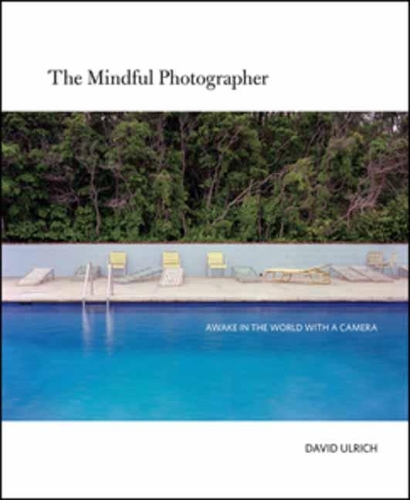
The Mindful Photographer
(Paperback)
Publishing Details
The Mindful Photographer
By (Author) David Ulrich
Rocky Nook
Rocky Nook
2nd August 2022
25th May 2022
United States
Classifications
General
Non Fiction
770.233
Physical Properties
Paperback
240
Width 187mm, Height 229mm
Description
Discover your voice, cultivate mindful awareness, and inspire creative growth with photography
In The Mindful Photographer, teacher, author, and photographer David Ulrich follows up on the success of his previous book, Zen Camera, by offering photographers, smartphone camera users, and other cultural creatives 55 short (1-5 pages) essays on topics related to photography, mindfulness, personal growth, creativity, and cultivating personal and social awareness. Whether youre seeking to become a better photographer, find your voice, enhance your ability to see the world around you, realize your full potential, or refine your personal expression, The Mindful Photographer can help you. You will learn to:
Awaken your creative spirit
Find joy and fulfillment with a camera
Improve your photography
Express your deepest vision of the world
Learn to be more present in the moment
Deepen your capacity for observation
Gain insight into your self and others
Cultivate mindful seeing
Use your camera as a tool for change
Enhance your visual literacy
And much more
You can read this beautiful, richly illustrated book in order, following its inherent structure, or you can dive into the book anywhere that appeals to you, following your own stream of interest. No matter how you read and work through the bookmany of the essays contain exercises, working practices, and quotes from well-known photographersyou will learn to deepen your engagement with the world and discover a rich source of creativity within you through the act of taking pictures.
TABLE OF CONTENTS
Introduction
Seek Resonance
Camera Practice
Avoid the Merely Pictorial
Pictures are Not About Pictures
Visual Learning
First Sight; Beginners Eye
The Camera in Your Hand
Seeing from the Body
Its All About Hormones
Attention and Distraction
Keep the French Fries
Becoming Good
Audience
Fitting into the Flow of Time
Catch the Wave, Not the Ripple
Of Time and Light
In Space
Finding Your Mojo
River of Consciousness
Why Selfies
When to Put the Camera Down
Mindful Sight
Creative Time
Minding the Darkness
Potency of Metaphor
Mapping the Internal Terrain
What Helps
Analyzing Your Images
Sift, Edit, and Refine
Sequencing
Experiment
Become the Camera
Music of the Spheres
InSeeing
Fifty/Fifty
Creative Mind and Not Knowing
Trust Your Process
Digital Life
Steal Like an Artist
Art is a Lie that Tells the Truth
Use Irony Sparingly
Embrace Paradox
When to be Tender, When to Snarl, When to Shout, and When to Whisper
Sharpness is a Bourgeois Concept
Learn to Love the Questions
The Wisdom of Chance
Awake in the World
The Cruel Radiance of What Is
Hope and Despair
Companions on the Way
Coherence and Presence
Wholeness and Order
Creative Intensity
Sea of Images
The Power of Art
Author Bio
David Ulrich is an active photographer and writer whose work has been published in numerous books and journals including Aperture, Parabola, MANOA, and Sierra Club publications. Ulrich's photographs have been exhibited internationally in over seventy-five one-person and group exhibitions in museums, galleries, and universities. He is currently co-director of Pacific New Media Foundation in Honolulu, Hawai'i. He has taught for Pacific New Media, University of Hawai'i Mnoa and was a Professor and Chair of the Art Department at Cornish College of the Arts in Seattle. For fifteen years, he served as Associate Professor and Chair of the Photography Department of The Art Institute of Boston. Ulrich is the author of Zen Camera: Creative Awakening with a Daily Practice in Photography and The Widening Stream: the Seven Stages of Creativity, as well as the co-author of Through Our Eyes: A Photographic View of Hong Kong by its Youth. He earned a BFA degree from The Museum School of Fine Arts in Boston and an MFA degree from The Rhode Island School of Design. He is a consulting editor for Parabola magazine and a frequent contributor. David Ulrich is uniquely qualified to address the themes found in his books on creativity and seeing. The genesis for the books took place over twenty-five years ago when the author assisted the renowned photographer Minor White in editing The Visualization Manual, an unpublished manuscript that details White's teaching methods derived from over forty years of teaching photography and visual perception. Other circumstances have forcefully intervened in the author's life as well, not the least of which was the loss of his right, dominant eye in an impact injury at the age of thirty-three. He writes: 'Fearing the loss of my capacity to see and photograph, and with all hope to the contrary, this blow helped to awaken my own awareness. Losing an eye and facing the resulting need to learn to see again, this time as an adult, assisted the growth and development of my perceptual capacities-and helped me better understand the function and process of sight. Above all, I learned to not take vision for granted. It was a profound learning experience, one that continues to this day. The experience was traumatic and painful-like nothing else I have ever experienced-and a great privilege.'
